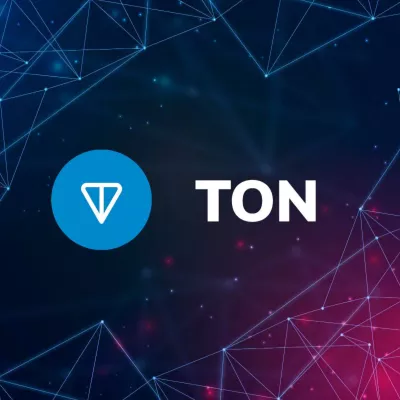The ketogenic diet, widely discussed and popular in the world of health and fitness today, has a rich history and unique principles. Despite its relevance, many aspects of this dietary approach remain misunderstood or misinterpreted. In this article, we will explore the basics of the ketogenic diet, its origins, key principles, practical application, and assess potential benefits and risks.
History of the Ketogenic Diet
The ketogenic diet began its history about 100 years ago, in 1921, when Dr. Wilder was looking for ways to treat epilepsy in children. At that time, medicine did not have effective medications for this purpose, and it was discovered that fasting reduced the frequency of seizures. Dr. Wilder developed a low-carbohydrate and high-fat diet that mimicked the fasting effect while providing the body with fats as nutrition.
Interesting Fact:
The ketogenic diet was revisited in the 1990s thanks to a boy named Charlie and his father, Mr. Abrahams. The ketogenic diet helped Charlie overcome epileptic seizures when traditional medicine proved ineffective. Subsequently, Charlie's father established the "Charlie Foundation," which contributed to the popularization of this dietary approach and its research.
Principles of the Ketogenic Diet
The ketogenic diet primarily emphasizes the consumption of fatty foods and the exclusion of carbohydrate-containing products. The macronutrient ratio is approximately 60–70% fats, 20–30% protein, and only 10% carbohydrates, with their quantity not exceeding 50 grams per day. Carbohydrates can only be obtained from vegetables, non-sweet fruits, and berries. The principle of the diet is based on the fact that when carbohydrate consumption is reduced to 50 grams per day, the body begins to break down fats and use fatty acids for energy production, thereby entering a state of ketosis.
Products Consumed in a Ketogenic Diet
The main products included in a ketogenic diet typically consist of high-fat and low-carb items. These include:
- Fats and Oils: Vegetable oils (such as olive, coconut), butter, lard.
- Meat and Fish: Fatty meats and fish, such as beef, pork, salmon, sardines.
- Cheese and Dairy Products: High-fat cheeses, sour cream, unsweetened yogurt.
- Eggs: Eggs are a good source of protein and fat.
- Low-Carb Vegetables: Leafy green vegetables, cauliflower, broccoli, cucumbers.
- Non-Sweet Fruits and Berries: Avocado, limited amounts of berries like strawberries, raspberries.
- Nuts and Seeds: Almonds, walnuts, flaxseeds, chia seeds.
Since the main goal of a ketogenic diet is to maintain a low carb intake, it's important to avoid high-carb foods like sweet fruits, grains, pasta, and sugar.
Effectiveness and Potential Risks
A ketogenic diet can be effective for weight loss and blood glucose control, which is especially important for diabetes. It also promotes a feeling of prolonged satiety, reducing appetite and the risk of overeating.
However, the keto diet is associated with several serious side effects, including vitamin and mineral deficiencies, kidney stone formation, osteoporosis, cardiac issues, and an increase in "bad" cholesterol levels.
There is also a risk of developing ketoacidosis - a life-threatening condition where the body's acid-base balance shifts towards acidity.
Who Should Consider a Ketogenic Diet
✅ A ketogenic diet may be a suitable option for:
â–«ï¸ Meat and fatty food enthusiasts, those who are not fond of sweets and bread.
â–«ï¸ People looking to lose weight without losing muscle mass. The keto diet helps burn fat, including visceral fat, while preserving lean muscle mass.
â–«ï¸ Individuals with type 1 and 2 diabetes, as the diet reduces blood glucose and insulin levels.
â–«ï¸ Those aiming to improve brain health. The diet has a positive impact on mental and emotional well-being and can help with migraines and epilepsy.
â–«ï¸ People looking to reduce the risk of atherosclerosis.
Who should not follow a ketogenic diet
⌠The ketogenic diet is contraindicated for:
â–ªï¸ People with kidney and liver diseases, disorders of fatty acid oxidation.
â–ªï¸ Those engaged in team sports, crossfit, and medium-distance running.
â–ªï¸ People with fragile bones, as the diet may increase the risk of fractures.
Challenges of following a ketogenic diet
The ketogenic diet can be challenging to adhere to due to a condition called "keto flu," which includes symptoms such as nausea, headaches, fatigue, dizziness, insomnia, and constipation. These symptoms can persist for several days to several weeks and are a result of the body adapting to a lack of glucose. It's important to note that if you cheat and consume carbohydrates, your body will exit ketosis, and the whole process will need to start over.
The ketogenic diet has both its pros and cons. It's an effective way to lose weight and control blood glucose levels, but there are serious side effects and restrictions. It's essential to consider individual health characteristics and consult with a medical professional before starting any diet, including a ketogenic one.



 Українська
Українська
 Русский
Русский
 Deutsch
Deutsch
 Polski
Polski
 Magyar
Magyar
 Ελληνικά
Ελληνικά
 Dansk
Dansk
 Español
Español
 Italiano
Italiano
 中文(简体)
中文(简体)
 한국어
한국어
 Latviešu
Latviešu
 Lietuvių
Lietuvių
 Nederlands
Nederlands
 Norsk (Bokmål)
Norsk (Bokmål)
 Bahasa Indonesia
Bahasa Indonesia
 Български
Български
 Português
Português
 Română
Română
 Slovenčina
Slovenčina
 Slovenščina
Slovenščina
 Türkçe
Türkçe
 Suomi
Suomi
 Français
Français
 Čeština
Čeština
 Svenska
Svenska
 Eesti
Eesti
 日本語
日本語














































